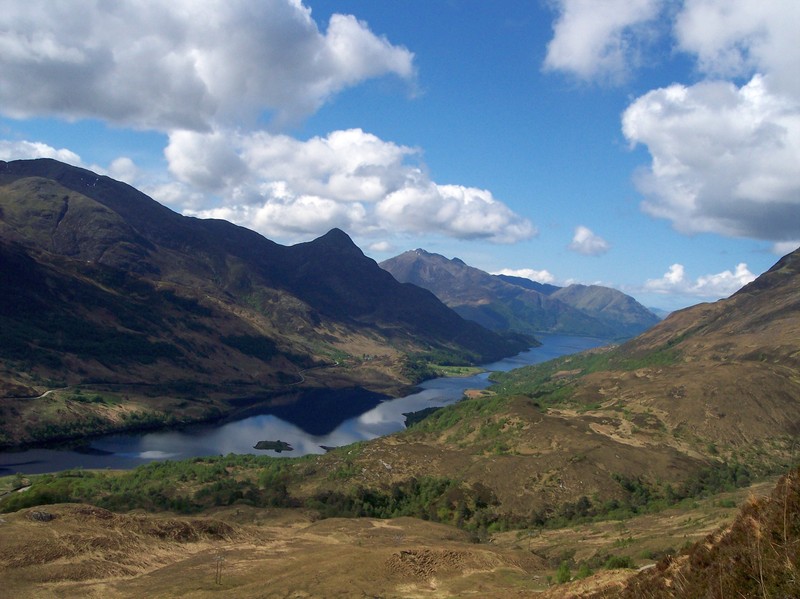Over hundreds and thousands of years, glaciers reshape the landscape beneath them. As they creep forward, the combined weight of the glacier and the perpetual forward movement means the ice continuously erodes away the rock below, permanently changing the terrain.
During the last Ice Age much of Scotland and northern Britain were covered by a thick sheet of ice. Where there might have been once a stream, impenetrable masses of ice pushed their way downwards, widening and carving. As the climate warmed, 10 000 years ago, the ice slowly melted away to reveal broad U-shaped valleys.
David Tanner photographed Loch* Leven, which lies at the bottom of a beautiful U-shaped valley carved out by glaciers during the last Ice Age.

“Loch Leven” by David Tanner. This picture shows a view west along Loch Leven and is distributed by the EGU under a Creative Commons licence.
“The geology of the valley is very complex” describes David, “There are a series of metamorphosed sediments called the Dalradian (the Celtic name of the area is Dál Riata), which were intensely folded and deformed during the Caledonian Orogeny (in the Devonian)”. The aim of David’s work was to unravel the folding history of the rocks, because, as David explains “the deformation history of the Dalradian, compared to the rest of Scotland, is still poorly understood”. Detailed mapping revealed four different folding episodes.
*(the Celtic word for lake).
Imaggeo is the EGU’s open access geosciences image repository. Photos uploaded to Imaggeo can be used by scientists, the press and the public provided the original author is credited. Photographers also retain full rights of use, as Imaggeo images are licensed and distributed by the EGU under a Creative Commons licence. You can submit your photos here.
